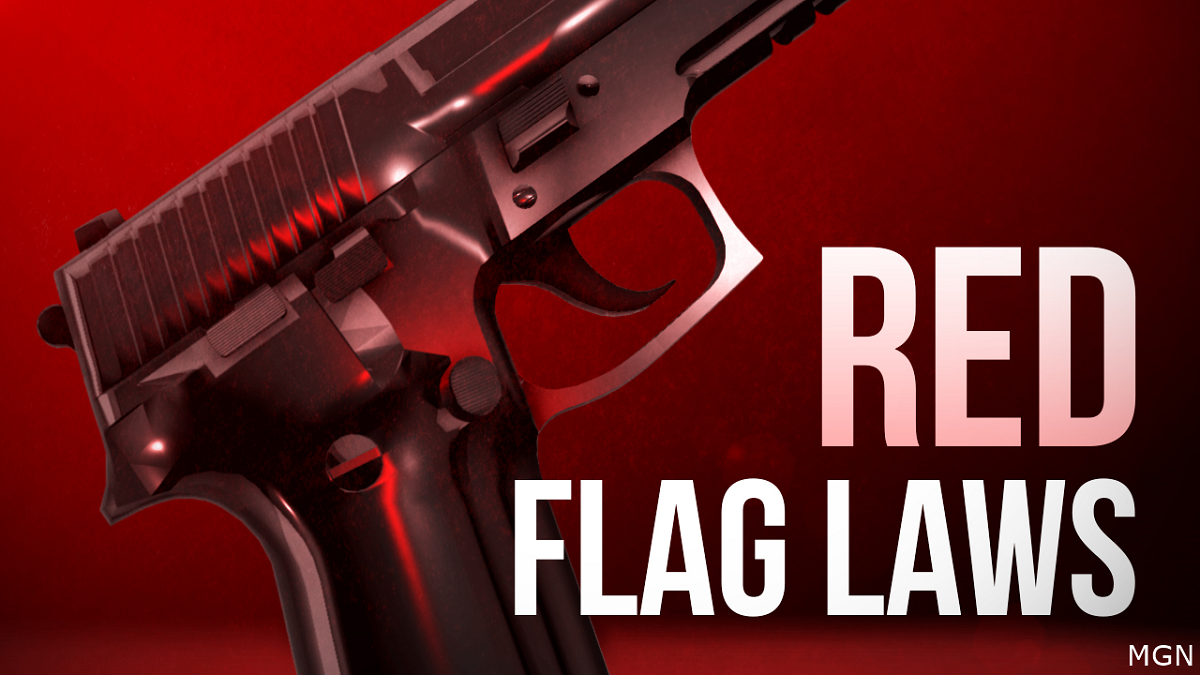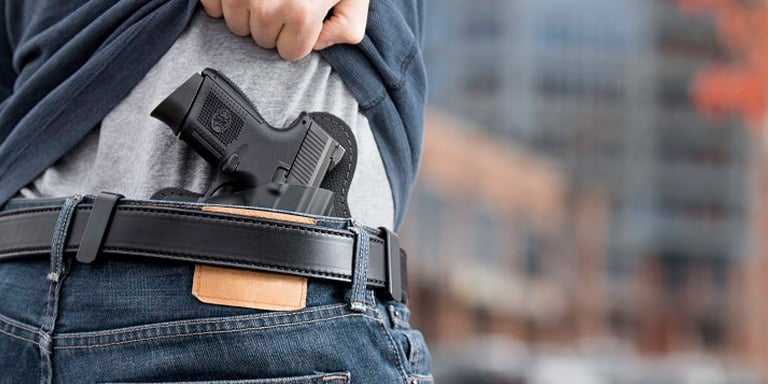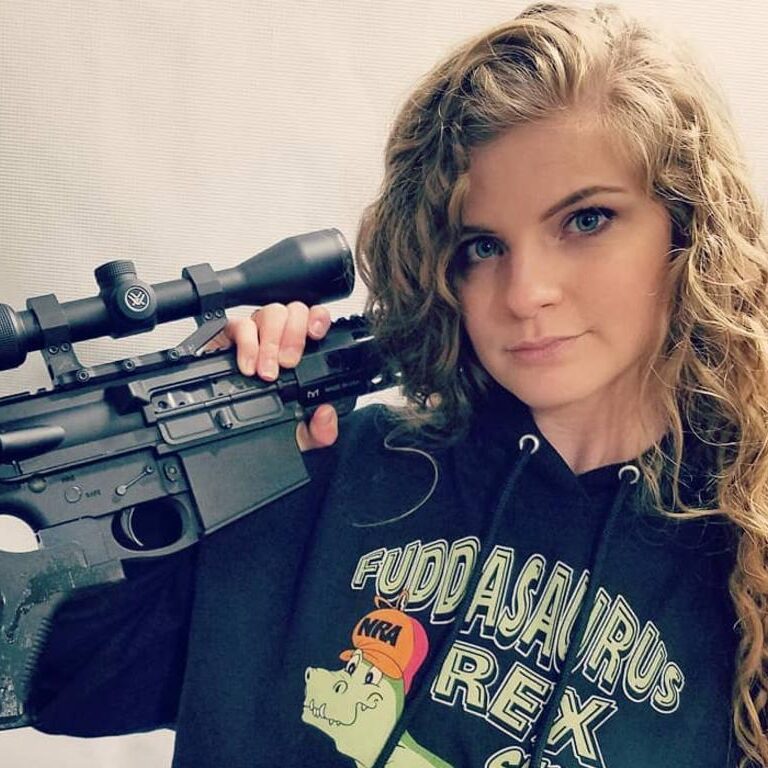Red Flag Gun Laws
In the ongoing debate surrounding gun control in the United States, the discussion often seems like a broken record. Calls for banning “Assault Weapons” and implementing universal background checks persist as attempts to regulate legal gun ownership. One notable initiative in this realm is the rise of red flag gun laws, which is seen by many as a step towards universal background checks and enhanced firearm safety measures.
The complexity of this subject is undeniable, compounded by strong emotions and the backdrop of tragic gun-related incidents. At the time of writing, 19 states in the U.S. have passed red flag gun laws, which has sparked controversy and debate, particularly within conservative circles. With a new Democratic president in office, concerns over the impact on Second Amendment rights have intensified among legal gun owners.
Unpacking Red Flag Gun Laws
“Red flag” laws, officially known as “extreme risk protective orders,” are essentially risk-based gun removal measures, akin to more restrictive restraining orders. These laws empower individuals such as family members, friends, teachers, therapists, and others to formally request an investigation into someone in their proximity who possesses a firearm and is deemed a significant danger to themselves or others.
Under these laws, law enforcement creates a formal petition to local courts, seeking temporary confiscation of firearms from the individual in question. A local judge then approves the temporary restraining order, resulting in the removal of the firearms. Failure to comply with this order can lead to criminal charges. However, it’s important to note that these laws vary significantly from state to state, each with its interpretation and procedures.
The Motivation Behind Red Flag Laws
The surge in mass shootings over the past several decades has prompted the introduction of red flag laws as a means to identify and address potential threats more effectively. These laws aim to prevent more mass shootings and reduce gun-related casualties by identifying individuals who show signs of posing a danger to themselves or others.
One key rationale for the increasing popularity of red-flag gun laws is the perceived gap in existing gun regulations. Current federal laws prohibit firearm ownership for those with felony convictions, domestic violence misdemeanors, previous mental health institutionalization, and active restraining orders. However, many mass shooters do not fit these criteria, making comprehensive red flag laws a potential solution to this gap.
Red Flag Laws on the Rise
As of now, 19 states and the District of Columbia have enacted some form of red-flag law. These laws exist under different names and formats in each state. For example, California has Gun Violence Restraining Orders, Colorado implements Extreme Risk Protection Orders, and Connecticut employs Risk Warrants.
Interestingly, Oklahoma has taken a unique stance by enacting an “anti-red flag” law, making it the first and only state to do so. This law explicitly prohibits the implementation of red flag laws.
The Temporality of Red Flag Laws
Red flag laws typically fall into two main categories: temporary and final restrictions. Temporary restraining orders are issued by courts quickly to assess an individual’s potential threat to society. These orders are short-lived, expiring within 2-21 days, depending on the state.
After this temporary assessment, final restrictions may be invoked. Individuals facing such restrictions usually have an opportunity to contest the order. If a court deems someone a hazard, a final restriction can be enacted, lasting between 1-5 years.
Second Amendment Considerations
A pressing concern with red flag laws revolves around potential violations of the Second Amendment, which guarantees the right to bear arms. While red flag laws have been upheld as not violating this amendment, there remains limited legal precedent on the matter.
The complexity arises from balancing individual rights with public safety. The Second Amendment’s wording suggests a right to bear arms, but this right is not unlimited, as evident from existing restrictions on individuals with violent histories. The uniqueness of red flag laws lies in their temporary nature—temporarily stripping Second Amendment rights from individuals deemed high-risk until due process is completed.
Assessing Effectiveness and Concerns
Assessing the effectiveness of red flag laws depends on the intended outcome. Studies have shown that these laws are linked to preventing suicides, a significant concern given that a substantial portion of gun deaths in the U.S. are due to suicides. However, evidence regarding their efficacy in preventing mass shootings is inconclusive.
Critics raise concerns about the potential for abuse and due process violations. Accusations without factual evidence and the potential for personal vendettas are notable worries. While red flag laws have garnered public support, the tension between safeguarding the community and protecting individual rights remains a challenge.
Conclusion
Overall, red flag laws aim to balance public safety and due process by providing a legal process to restrict certain individuals from accessing firearms temporarily when credible risks exist. However, applications and standards for issuing risk orders remain controversial.
The topic of red flag gun laws encapsulates the complex interplay between public safety and individual rights. While these laws have the potential to prevent suicides and provide an avenue for early intervention, concerns about due process and potential abuse cannot be ignored.
FAQs;
Q1: Are red flag laws the same across all states?
No, red flag laws vary significantly from state to state, with different interpretations, procedures, and durations for restraining orders.
Q2: Do red flag laws violate the Second Amendment?
Red flag laws have been upheld as not violating the Second Amendment, but legal precedent is limited, and the topic remains complex.
Q3: How effective are red flag laws in preventing mass shootings?
The evidence regarding red flag laws’ effectiveness in preventing mass shootings is inconclusive, with some studies suggesting a potential role.
Q4: Can red flag laws be abused?
Yes, there is a concern that false accusations and personal vendettas could lead to abuse of red flag laws, undermining due process.
Q5: What’s the balance between community safety and individual rights?
Striking a balance between preventing gun-related tragedies and protecting individual rights is a challenging endeavor that requires careful consideration and thoughtful legislation.
Q6: What is a red flag law?
A red flag law allows courts to issue an extreme risk protection order that temporarily prohibits someone from possessing or purchasing firearms if they are deemed a threat. Police or family/household members typically petition for an order.
Q7: What is the red flag issue?
Supporters argue red flag laws help prevent gun violence by disarming high-risk individuals. Critics argue they undermine due process rights and could be abused to wrongly disarm lawful owners. There are concerns over reliance on subjective standards of risk.
Q8: What is the red flag law in New York State?
New York adopted a red flag law in 2019 allowing courts to issue extreme risk protection orders after petitions from family/police and a hearing. If issued, the gun owner must surrender all firearms and is prohibited from making further purchases for the duration of the order.








